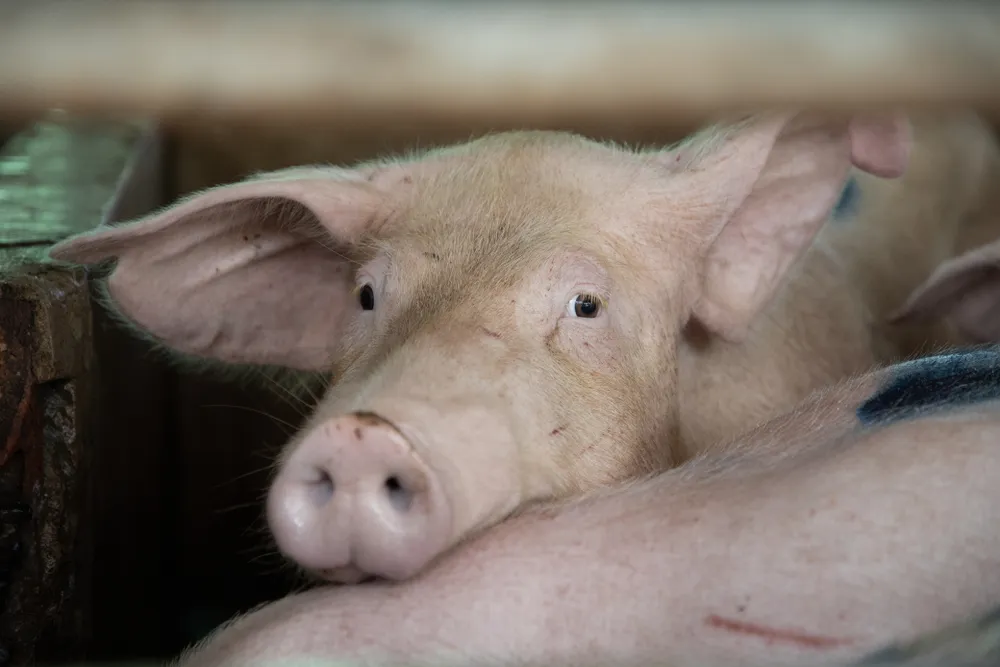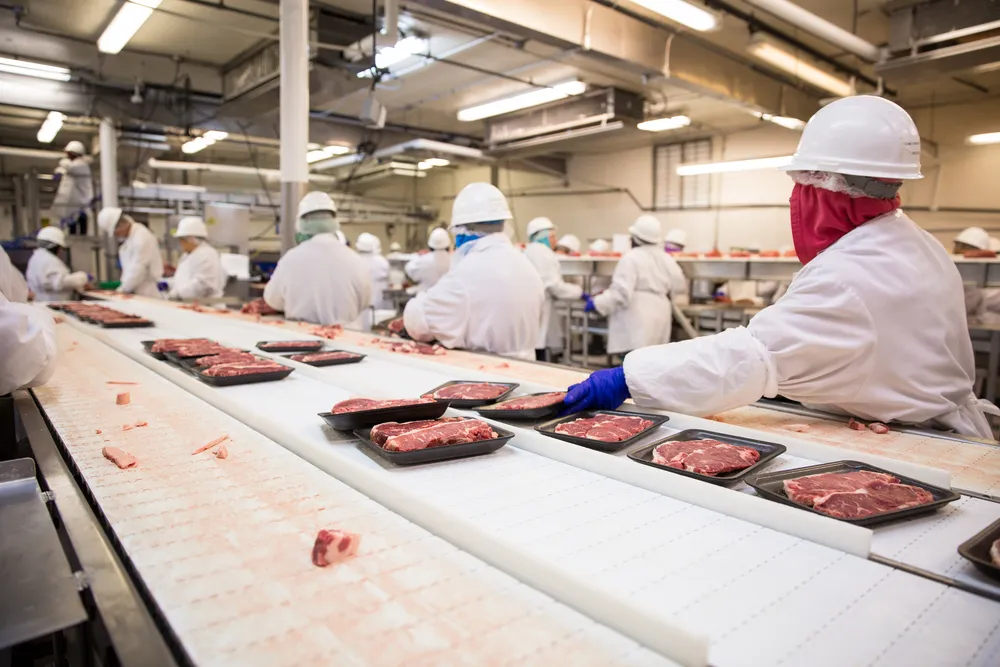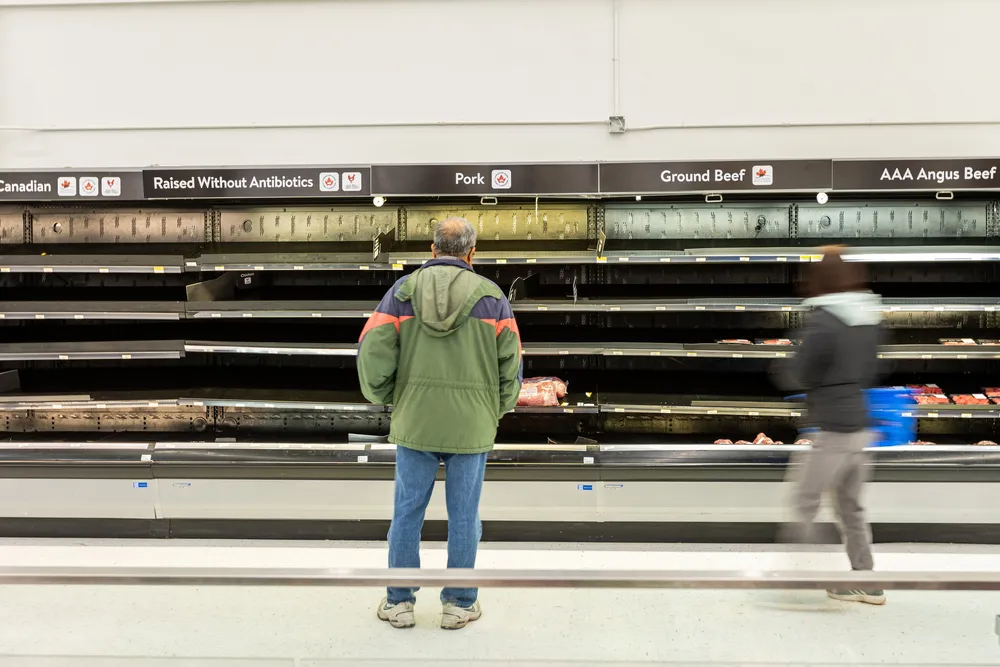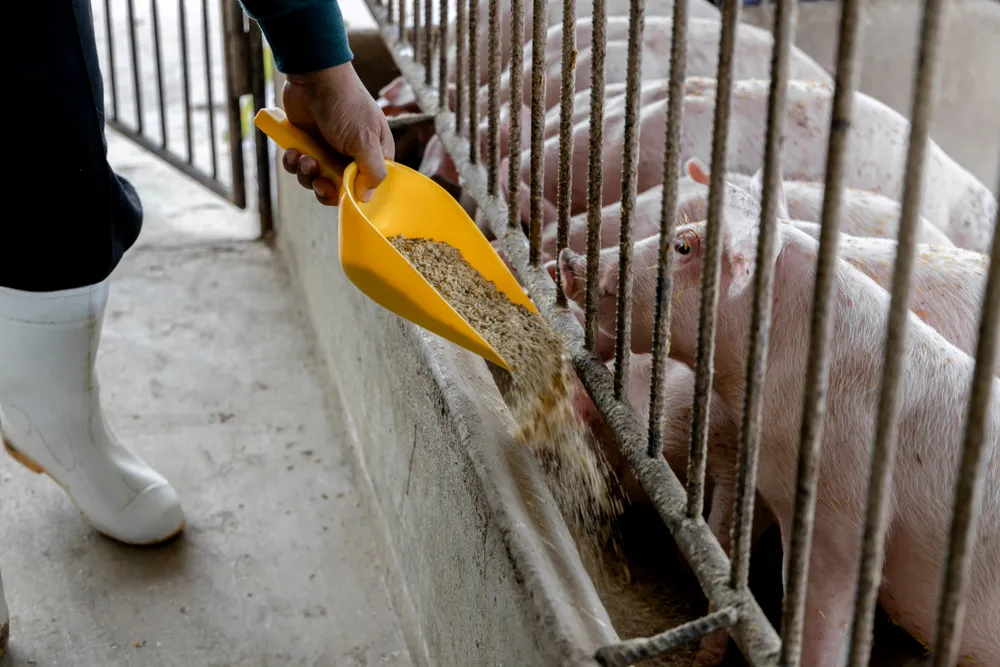

Source: Swine Tech
In a time when every country is seeking to advance its market and workforce, the question of how to feed populations continues to appear. As an industry dedicated to real pork for real people, pork has an important role to play across the globe in bringing protein to populations looking to develop industry on the global stage.
ASF’s Attack on Protein
One of the main places where global food security and pork combine is in the continued efforts to fight African Swine Fever (ASF). ASF, first discovered around 1920, is a disease originating from ticks found on wild pigs. When infected, a swine suffers a hemorrhagic fever, and while a vaccine has been developed against the virus, there is no known cure for its symptoms that have a nearly 100% fatality rate. ASF has been found in countries across Europe, Africa, Central America, and Asia, which are all fighting to eliminate the disease.
The impact of ASF has been devastating for many reasons, emotional, economic, and otherwise, but it has hit East Asia particularly harshly due to a cultural reliance on pork in many dishes native to the area. The 2018 emergence of the virus in the area is credited with killing roughly half of China’s swine population before spreading further into East Asian countries such as Mongolia, Vietnam, Cambodia, and Hong Kong. It’s no surprise that China, with its enormous population, has especially struggled with feeding its people as a result.


As the world’s largest consumer and producer of pork, efforts to control the disease via culling have had a ripple effect, from the scale of death itself to international trade and the inflation of pork products. On top of this, many of China’s farms are small-scale and aren’t designed to maximize the space available to them, so they don’t necessarily produce as much as they could. Coupled with the norm of moving pork across provinces to sell it, ASF can spread rapidly to infect farms already limited in production. So what does that look like for those living in infected areas?
ASF, while unable to manifest in a consumer, is able to spread through the meat and excretions of infected swine. As a result, it is difficult to contain and requires significant funding and research into disease prevention, limiting the government’s ability to take varied public health measures. What’s more, as a means of controlling outbreaks, China has to close live pig markets in affected areas, making it more difficult to access what food is available. Furthermore, the scale of death means that there is less pork available, driving prices up in areas where budgets are already tight. While some can supplement with rice and other grains native to the area, animal-based foods are important for appropriate protein intake, especially in children. An absence of quality protein in a diet has been linked to limitations in physical growth, which, when applied on a large scale, can limit the overall health of a workforce and, ultimately, the development of countries.


Also worth highlighting is the link between food security and food safety. Having food available is certainly part of the problem, but on a global scale, many countries struggle with keeping food that is in markets safe for people to eat. For example, Vietnam struggles to regulate its wet markets, leading to foodborne illnesses from pork, fish, and even vegetables that fill plates every day. Tangentially, across the world, large amounts of food go to waste due to poor transport conditions; spoiled or insect-riddled food can’t be safely served, and fixing this problem will require more structural reform than any one producer can accomplish. In order to keep populations healthy and able to expand and industrialize, food quality must be analyzed as critically as its quantity.
Accessing American Pork
Although knowledge of food scarcity and its links to pork across the globe can be useful when evaluating international partnerships, many readers based out of the United States should also know how food scarcity and pork impact the communities closest to them. After all, it is critical to avoid the trap of assuming that America sets a perfect example for other countries to follow. Food scarcity looks and functions differently across the globe, and the U.S. is not exempt from such a pressing concern. Though so far untouched by ASF, within the States, issues of food scarcity are primarily concerned with the availability and pricing of food. Thus, rather than disease control, the question shifts to how to get food from farms to the plates of those in need.
As of 2021, approximately 10.2% of all households in the U.S. were food insecure at some point during the year. Food insecurity can stem from a variety of places, but one of the most pressing for the States is the existence of food deserts. Food deserts are areas, rural or urban, where grocery stores are not easily accessible or where grocery stores do not offer healthy, affordable food items. This can create issues of obesity and/or nutrient deficiencies in populations of entire neighborhoods and cities, both of which are detrimental to long-term physical and mental development, particularly for children. In other words, kids who grow up hungry don’t have the same opportunities for success as their well-fed peers.


There are various programs to combat hunger running across the country under the direction of the Department of Agriculture, such as the Supplemental Nutrition Assistance Program. However, Iowa specifically is working with its farmers on the Pass the Pork initiative. Created in 2020 to combat the strain of COVID-19 on household resources, Iowa’s state government and the Iowa Pork Producers Association created Pass the Pork to fight food insecurity. Through this program, Iowan food banks receive donated pork sourced from farmers’ donations and extended hours at meat processing plants, which spend the extra time packaging and processing to meet local demands.
Alongside the accessibility of food, American food scarcity is also linked to waste coming from grocery stores, restaurants, and to a lesser extent, consumers. In fact, the Department of Agriculture estimates that between 30-40% of all food in the U.S. is wasted. Everyone has had the experience of finding forgotten or freezer-burnt food in the back of their fridge, but this is especially disheartening for those who cannot regularly find or afford quality food. As a result, some avoid buying fresh altogether, which again presents a public health concern for significant portions of U.S. citizens. With the time and resource constraints of modern society, it is difficult to pinpoint a solution to household waste. However, as far as the pork industry goes, pigs’ ability to eat a variety of foods is a unique tool for minimizing waste and maximizing profit.
Many smaller farms have practiced swill feeding, feeding pigs table scraps, for years, but on a much larger scale, entire facilities can run off of non-traditional feed. For example, Jimmy Tosh, founder of Tosh Farms®, emphasizes the profitability of feeding byproducts to pigs, from dog food to candy. To limit potential disease, food waste does have to be treated before it can go into a feed trough, but especially when grain prices rise, it’s a smart and sustainable business move to think outside of the box. Moreover, cheap feed means more farms can afford to expand and provide more pork for a consumer.


Finally, on a cultural level, as far as pork is involved, international practices present interesting examples. Many East Asian dishes use parts of a pig, such as its ears, snout, and brain, that the U.S. market often overlooks. Pork is a protein for everyone, and its diverse appeal in many different shapes for many different people is an asset for producers to consider emphasizing in their work.
Above all, whether abroad or at home, when considering why pork can’t reach the plates of so many, producers face issues of infrastructure that are not easily solvable. Still, pork is a multinational industry with some incredible minds. As long as its community stays informed and keeps looking to the future, progress is possible. Whether it’s an issue of disease control and prevention, excessive waste, or accessibility, fighting food scarcity will require a thorough restructuring of the way the world looks at agriculture. As the fight against world hunger continues, pork plays a role for all as a protein worth consumer attention.
By Isabella River





